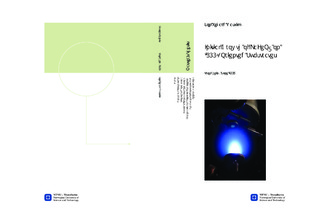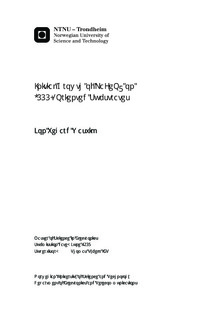| dc.description.abstract | Perovskite oxide thin films grown in the (111)-direction are, due to their expected novel properties resulting from the strong structural and electronic coupling, interesting for all oxide heterostructures. A prerequisite for such structures is control of growth and surface morphology. This work aims to elucidate the initial growth of LaFeO3 on (111)-oriented SrTiO3 and La0.7Sr0.3MnO3 substrates in order to investigate any differences in growth induced by the substrates.In this master thesis, initial growth of the antiferromagnet LaFeO3 by Pulsed Laser Deposition has been investigated both on (111)-oriented SrTiO3 and on three monolayer thick La0.7Sr0.3MnO3 buffer layers, the materials have been chosen due to their magnetic coupling properties. Characterization has been done with Atomic Force Microscope, in-situ Reflection High-Energy Electron Diffraction (RHEED) and X-Ray Diffraction.A study of the initial growth on SrTiO3 is presented, showing two growth regimes over the first two monolayers. The first RHEED intensity peak is observed after half as many pulses as the next, the continued growth rate is 45 laser pulses per monolayer. In the case of LaFeO3 grown on a La0.7Sr0.3MnO3 buffer layer, the RHEED oscillations show a constant growth rate of 45 laser pulses per monolayer. A possible origin for the change in RHEED period has been identified as filling of Sr- vacancies in the substrate surface.Furthermore, in order to elucidate the continued growth of LaFeO3, thicker films between 2.5 and 30nm are grown. They show an initial layer-by-layer growth mode over the first 2.5nm before transitioning into 3D island growth mode. LaFeO3 was also seen to grow smoother at low temperatures 540 degrees celcius.The (111)-oriented LaFeO3/La0.7Sr0.3MnO3 interface is interesting as it exhibit exchange coupling in the (100)-oriented interface and an increased coupling is expected in the (111)-orientation. LaFeO3/La0.7Sr0.3MnO3 heterostructures are synthesized in order to investigate the growth at a rougher interface. The films showed a good crystalline quality, but due to early roughening they had a near 3D surface at the interface and a 3D surface in the end.In-situ measurements of the surface in-plane constant showed a large change in all films were it was applied, this was attributed to a general roughening effect leading to an increased angular distribution of the RHEED beam. These investigations are important for further understanding of growth in the (111)-orientation and in preparation for further investigations of the LaFeO3/La0.7Sr0.3MnO3 interface coupling. | nb_NO |

